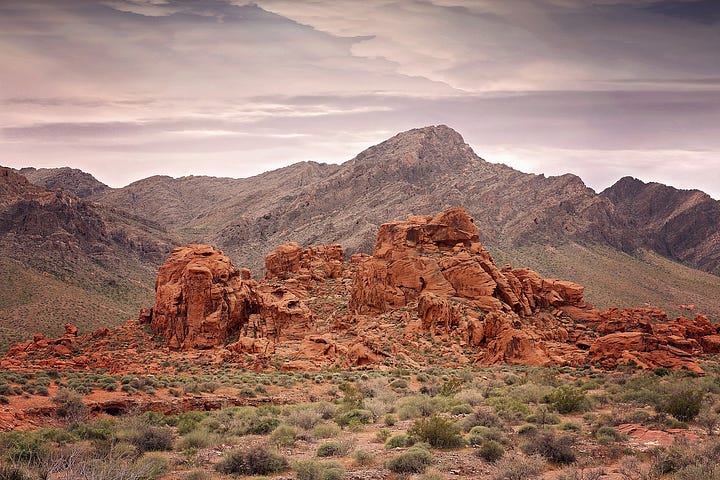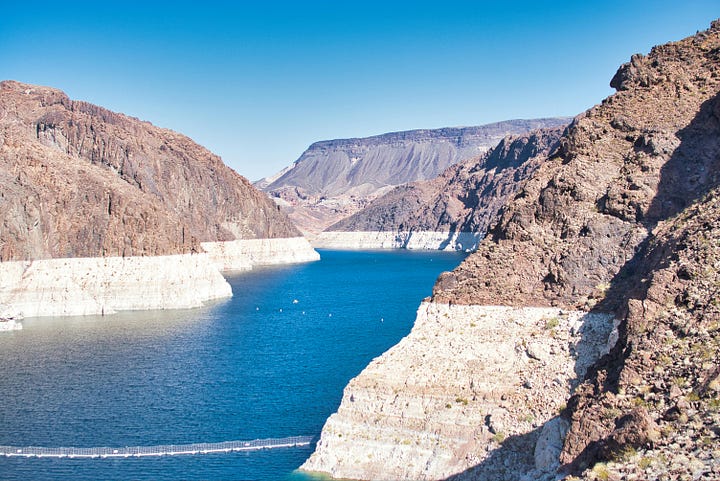A Crime Against Time: The Irreversible Damage at Lake Mead
Ancient Rock Formations Destroyed, Threatening Wildlife and Sparking Outrage
In an act described as both "appalling" and "disgusting" by park officials, two men from Henderson, Nevada, have been indicted for allegedly vandalizing ancient rock formations at the Lake Mead National Recreation Area. This incident, which has sparked outrage among conservationists and the general public alike, underscores the delicate balance between human activity and natural preservation—and the need for greater public engagement in protecting our shared heritage.


The Incident
On April 7, 2024, Payden David Guy Cosper and Wyatt Clifford Fain allegedly pushed large slabs of sandstone over a cliff near the Redstone Dunes Trail, causing irreversible damage to formations that have stood for approximately 140 million years. Captured on video, the act was described by John Haynes, a spokesperson for the recreation area, as a senseless destruction of one of the park's most beautiful and cherished spots. The incident serves as a stark reminder of how fragile and irreplaceable our natural landmarks truly are. The two men are scheduled to face trial on October 8, 2024.
Geological and Ecological Significance
The Redstone Dune Formations, composed primarily of Aztec sandstone, are a testament to geological processes spanning millions of years. These formations were created by the compression and cementation of ancient desert sands, with their striking red hue attributed to iron oxide. Natural erosion by wind and water over millennia has sculpted these formations, making them not only a geological wonder but also a vital component of the park's ecosystem.
Implications for Wildlife
The destruction of these formations is more than just an aesthetic loss. They play a crucial role in the local ecosystem, providing shelter and microhabitats for wildlife, including 387 native animal species. Many of these species, some of which are threatened or endangered, depend on the formations to escape the intense desert heat and conserve water. The vandalism has disrupted these habitats, potentially threatening the survival of certain species in an already fragile ecosystem stressed by fluctuating water levels due to drought and climate change.
Legal and Social Implications
Cosper and Fain have been charged with injury and depredation of government property, facing potential sentences of up to ten years in prison if convicted. Their defense claims a lack of awareness regarding the protected status of the area, highlighting a potential gap in public education and signage within the park. This case raises broader questions about the responsibilities of visitors in protected areas and the measures in place to prevent such incidents.
However, the legal ramifications alone may not be enough to prevent future vandalism. This incident has brought to light the need for stronger educational campaigns within national parks, better signage to inform visitors of protected areas, and possibly harsher penalties to serve as a deterrent.
The Role of the Public and Park Management
With Lake Mead National Recreation Area covering 1.5 million acres and attracting around 6 million visitors annually, the role of the public in safeguarding these natural treasures is crucial. Park officials often rely on visitors to report suspicious activities due to staffing limitations, making public involvement a key element in preserving these areas.
This incident has prompted calls for increased public awareness and engagement in conservation efforts. Visitors can play a more active role by educating themselves on the significance of the sites they visit, respecting park rules, and reporting any suspicious or harmful activities to park authorities. Additionally, park management could consider implementing more robust educational programs, such as guided tours that emphasize the importance of preservation, or interactive exhibits that educate visitors on the park's geology and ecosystems.
Conclusion
The vandalism at Lake Mead is a stark reminder of the fragility of our natural heritage and the enduring impact of human actions. As the trial date approaches, the case serves as a catalyst for discussions on conservation, education, and the collective responsibility to preserve the natural world for future generations. The irreversible damage inflicted on these ancient formations is not just a loss for the present but a theft from the past and future alike, with profound implications for both the geological wonders and the wildlife that depend on them.
By fostering a stronger connection between the public and the natural world, and by implementing more effective protective measures, we can hope to prevent such tragedies from occurring in the future. The preservation of Lake Mead—and other national treasures like it—depends on the vigilance, awareness, and active participation of everyone who visits.
Ed Boks is a former Executive Director of the New York City, Los Angeles, and Maricopa County Animal Care & Control Departments. His work has been published in the LA Times, New York Times, Newsweek, Real Clear Policy, Sentient Media, and now on Animal Politics with Ed Boks. Contact Ed Boks at: animalpolitics8@gmail.com





Not plausible deniability!! As individuals entering a National Park, the “freedom” to destroy anything should not enter their brains. Instead, “Destruction is Funner!” Maximum sentences please.
This just enraged me. I hope these two men will be held accountable to the fullest extent of the law! It’s a crime against nature, decency and humanity!
What would posses anyone to destroy anything so beautiful? Sick and twisted and deranged!!!